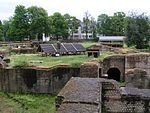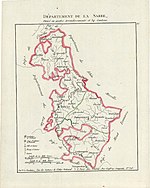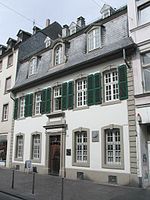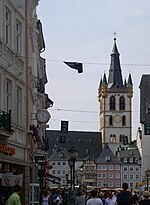Roman Bridge (Trier)
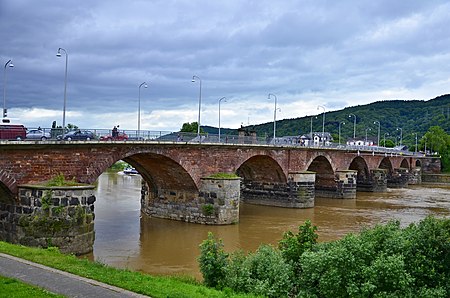
The Roman Bridge (German: Römerbrücke) is an ancient structure in Trier, Germany, over the Moselle. It is the oldest standing bridge in the country, and the oldest Roman bridge north of the Alps. The nine bridge pillars date from the 2nd century AD, replacing two older, wooden bridges that date at least as far back as 17 BC. In Roman times, tossing a coin off of the bridge into the Moselle was an offering of good luck. The upper part was renewed twice, in the early 12th and in the early 18th century, after suffering destruction in war. Along with other Roman and Early Gothic sites in Trier, the bridge was inscribed on the UNESCO World Heritage List in 1986 because of its historical importance and architecture.
Excerpt from the Wikipedia article Roman Bridge (Trier) (License: CC BY-SA 3.0, Authors, Images).Roman Bridge (Trier)
Römerbrücke, Trier West (West-Pallien)
Geographical coordinates (GPS) Address External links Nearby Places Show on map
Geographical coordinates (GPS)
| Latitude | Longitude |
|---|---|
| N 49.7519 ° | E 6.6265 ° |
Address
Römerbrücke (Alte Moselbrücke)
Römerbrücke
54294 Trier, West (West-Pallien)
Rhineland-Palatinate, Germany
Open on Google Maps
